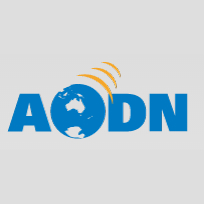Full description
The dataset contains temperature, and turbidity data measured by a Slocum glider off the coast of Kimberley (Western Australia). Salinity and conductivity data collected on this deployment, wasn't suitable quality to be made available.Slocum glider data from the oceans around Australia have been collected by the Ocean Gliders Facility (formerly known as the Australian National Facility for Ocean Gliders (ANFOG)), since June 2008 and are ongoing. The data are obtained from an onboard suite of instruments which include Seabird-SBE41 CTD (Conductivity, Temperature, Depth), WETLabs BBFL2SLO 3 parameter optical sensor (measuring Chlorophyll-a, CDOM and 700nm Backscatter) and an Aanderaa oxygen optode (measuring concentration of dissolved oxygen in seawater.
Lineage
Statement: The data has undergone the following quality control tests: 1) Impossible date test, which checks if time values are within a timeframe possible for the fleet; 2) Impossible location test, which requires that the observation latitude and longitude from the float be sensible; 3) Range test, which applies a gross filter on observed values for the measured scientific parameters, that accommodates all of the expected extremes encountered in the oceans around Australia; 4) Deepest pressure test, which requires that the profile has pressures/depths that are not higher than vehicle safe depth range plus 10%. (If there is a region of incorrect pressures, all corresponding measurements are also flagged as bad data.) 5) Spike test, which considers that the difference between sequential measurements where one measurement is quite different than adjacent ones, is a spike in both size and gradient. The test does not consider the differences in depth, but assumes a sampling that adequately reproduces the temperature and salinity changes with depth. The algorithm is used on temperature and salinity profiles only. 6) Gradient test, which is failed when the difference between vertically adjacent measurements is too steep. The test does not consider the differences in depth, but assumes a sampling that adequately reproduces the temperature and salinity changes with depth. The algorithm is used on temperature and salinity profiles only. The results of the above mentioned tests are listed using an IMOS standard set of IODE flags, which the user should refer to when using the data. Only items flagged as 1: Good data or 8: Interpolated data should be used. Each parameter's quality flagging is found in its corresponding quality control parameter (e.g. for the parameter PSAL, the quality flags are found in PSAL_quality_control). For further information, please refer to IMOS NETCDF USER'S MANUAL version 1.2 and AUSTRALIAN NATIONAL FACILITY FOR OCEAN GLIDERS (ANFOG) DATA MANAGEMENT USER'S MANUAL version 1.2 .Notes
CreditAustralia’s Integrated Marine Observing System (IMOS) is enabled by the National Collaborative Research Infrastructure Strategy (NCRIS). It is operated by a consortium of institutions as an unincorporated joint venture, with the University of Tasmania as Lead Agent.
The University of Western Australia (UWA)
Created: 24 02 2014
Data time period: 03 12 2013 to 23 12 2013
text: westlimit=121.3744; southlimit=-17.8655; eastlimit=121.8633; northlimit=-15.9579
User Contributed Tags
Login to tag this record with meaningful keywords to make it easier to discover
(Data available via the IMOS OPeNDAP server)
(Download data from the IMOS THREDDS server)
(Summary plots of each variable measured during the deployment (JPEG files))
uri :
http://data.aodn.org.au/?prefix=IMOS/ANFOG/slocum_glider/Kimberley20131203/![]()
(Link to the ANFOG data management document - former version)
(Delayed Mode QA/QC Best Practice Manual)
global : 2436c7a9-59a2-4ed1-8e7c-f513e945bd6e
- global : c57196a3-8f1d-4212-9c14-33d4e449225c


